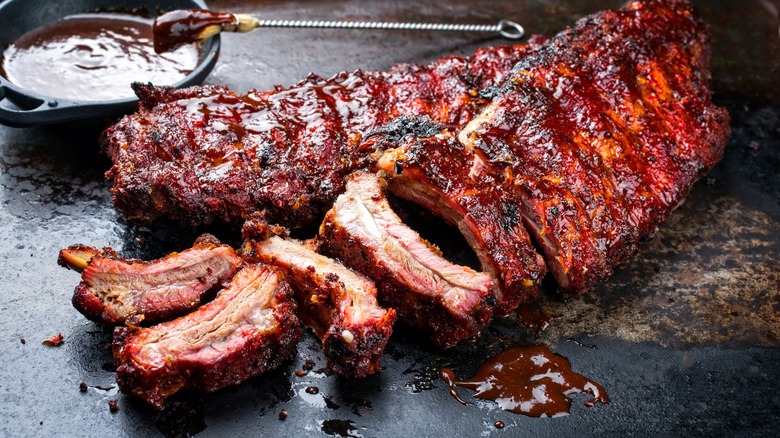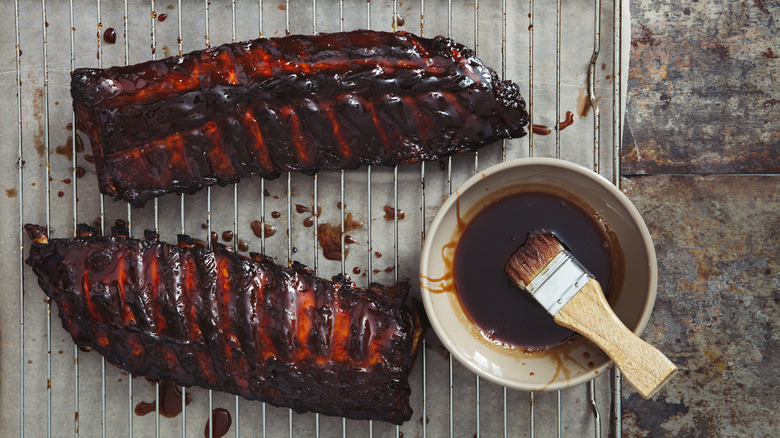The Type Of Ribs You Need For Better Browned Meat
Ribs are ribs, right? They're often meaty, rich, smoky, spicy, a touch sweet, and have a bone down the middle that is convenient to eat around and hold. Ribs can be all those things, but that's just scratching the surface. They can be from a variety of animals, such as beef ribs, which we have ample tips for cooking, or even lamb ribs that are delectable when slow-roasted on the grill. Even when we narrow the focus to just pork ribs, there are several cuts, from the ever-popular baby back ribs to the meaty and expansive spareribs. Each cut offers different qualities, so it is important to know what your aim is when choosing the rack of ribs that's right for you. Crust development and browning are often hallmarks of quality ribs, and one cut of ribs in particular browns best.
For the rundown on all things ribs, Tasting Table consulted with Robbie Shoults, celebrity chef and third-generation owner of Bear Creek Smokehouse, owner of Marshall Mercantile and HIGH HORSE at Marshall Mercantile, and founder of Bear Rubz Grillin' Spices. With a pedigree like that, it's safe to say Shoults knows how to get the most out of meat. When it comes to pork ribs that brown up nicely, he says that one cut outshines the other. "I've always thought that loin back ribs take on more color and brown the best because they are so meaty and lean," Shoults explains.
Browning depends on a few factors in ribs
Loin back ribs may not be a type most home cooks are familiar with based on the name. That's because they generally are sold under the more popular moniker, baby back ribs. Now that Chili's famous advertising jingle is stuck in your head, let's explore what makes this cut stand out. Subtly different, baby back ribs and spareribs are both part of the same anatomical structure, but from different areas on the pig's body. As the name implies, baby back ribs come from the area closer to the back and loin and have, as Robbie Shoults notes, leaner meat. That's what accounts for the baby part of the name, as they are considerably smaller than spareribs, which come from a lower part of the ribcage closer to the belly.
If you take a look at a rack of baby back ribs, you'll notice that they are relatively uniform in size. This is an important factor in browning as it means the ribs get an even exposure to heat. They also don't have the same amount of intramuscular fat, or marbling, as spareribs. While this may make them less appealing to those looking for a rich rib, the decreased fat means decreased moisture. Moisture is antithetical to the browning process, so baby back ribs cook quicker and take on color faster and in a more robust way than their counterparts.

